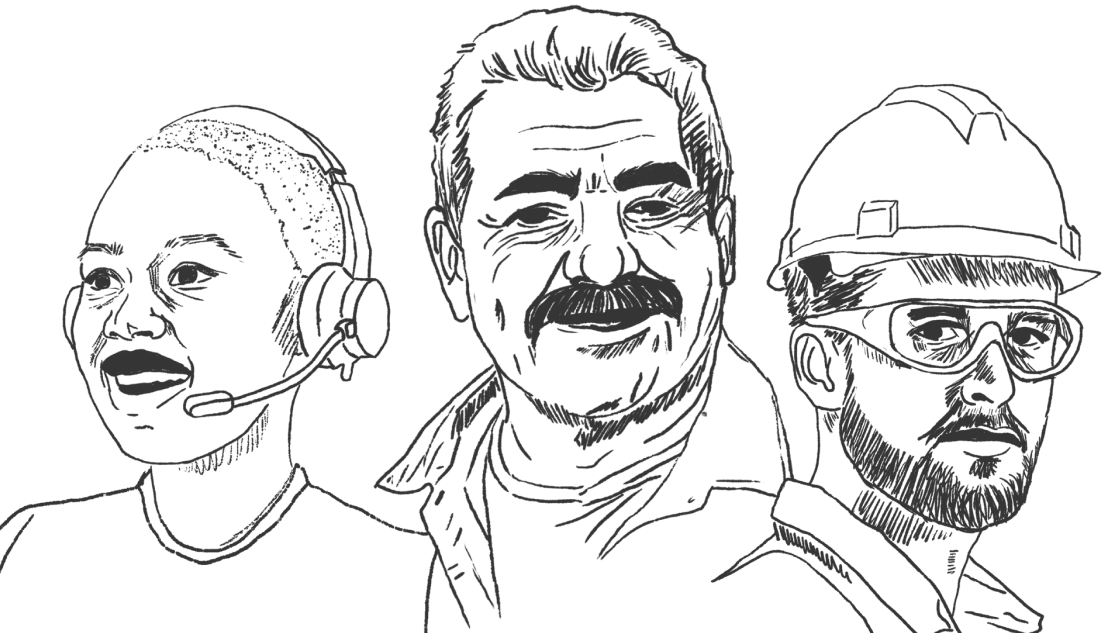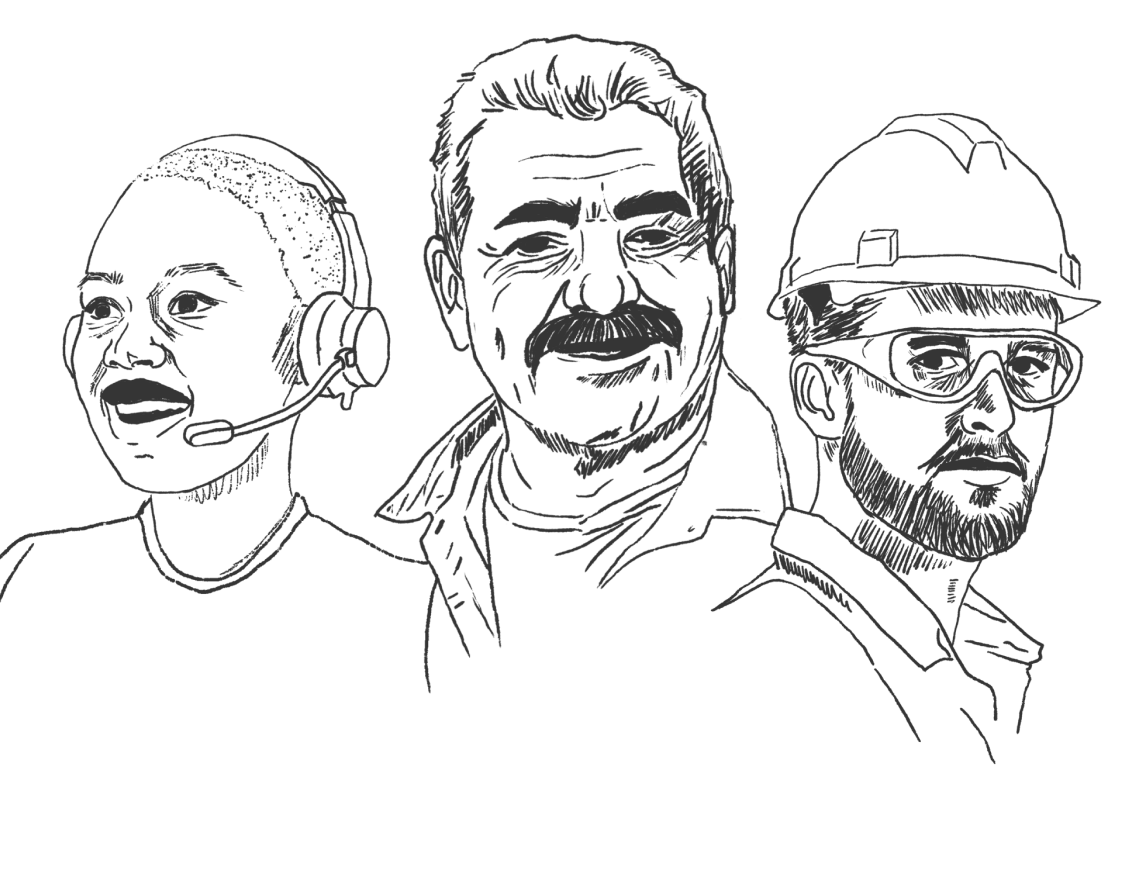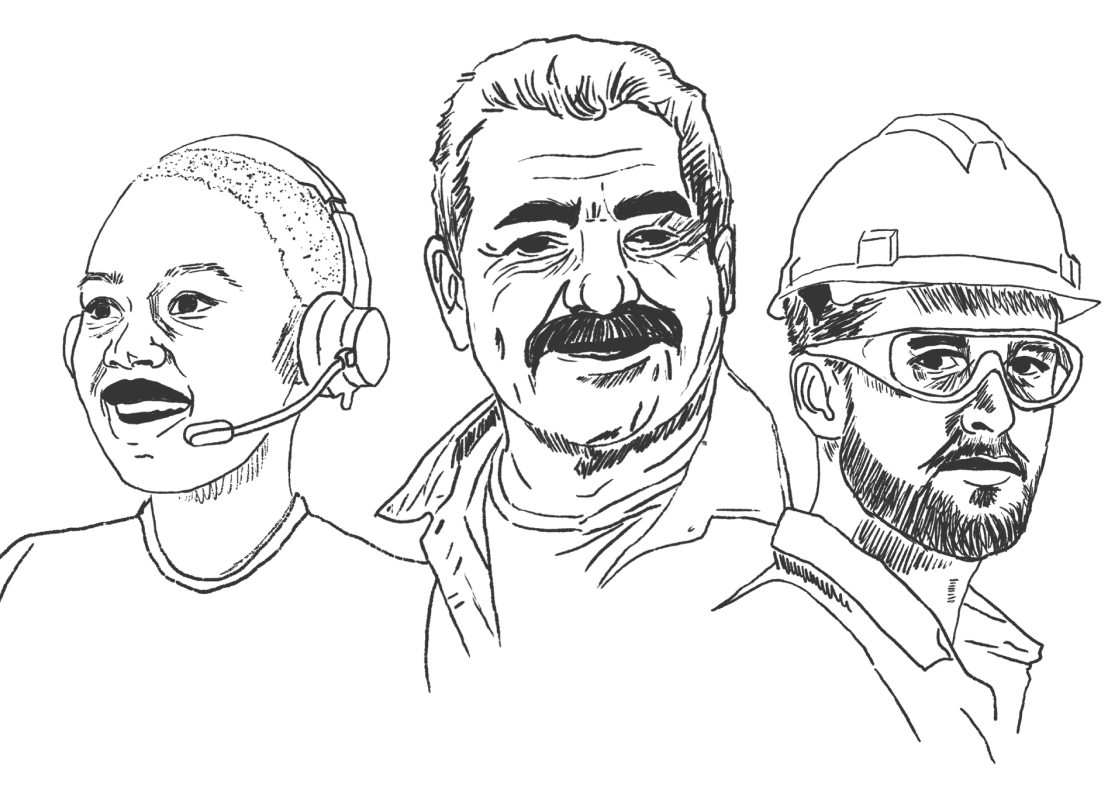The Most Dangerous Places to Drive in Austin
Austin, Texas, is one of the fastest-growing cities in the country, especially within the last five years. And with this rapid growth comes increased traffic congestion and a higher risk of vehicle accidents. Car accidents in Austin have become a significant public safety concern, affecting residents, commuters, and visitors. Understanding the patterns, causes, and locations of these accidents is crucial for improving road safety and preventing future collisions.
To provide an accurate picture of car accidents in Austin, the data presented here has been gathered from multiple reputable sources. We rely on the Texas Department of Transportation’s Crash Records Information System (TxDOT CRIS), which compiles comprehensive crash reports from across the state, including detailed information on accident locations, contributing factors, and outcomes. Additionally, data from the National Highway Traffic Safety Administration’s Fatality Analysis Reporting System (NHTSA FARS) provides insights into fatal crashes, enabling a deeper understanding of the most serious incidents on Austin’s roads.
Local agencies such as the Austin Police Department (APD) also provide valuable statistics and incident reports, highlighting emerging trends and areas of concern within the city limits. News outlets and public safety organizations, such as the Central Texas Public Safety Commission and KUT 90.5 FM, contribute ongoing coverage and analysis, helping residents stay informed about current risks and road conditions.
By analyzing this diverse set of data, we identified the most dangerous intersections, common causes of accidents, and times when crashes are most likely to occur in Austin. This information is crucial for drivers, policymakers, and safety advocates seeking to reduce accidents and enhance Austin’s streets for the safety of all.
Key Takeaways from Crash Data
- Most Dangerous Intersection: I-35 & East Riverside Drive, with 280 crashes due to heavy commuter traffic and many pedestrians.
- Deadly Hotspots: I-35 & East Riverside (7 fatal crashes) and I-35 & US-183 (6 fatal crashes), often involving drunk driving or speeding.
- When Crashes Happen Most: Morning (7–9 AM) and evening rush hours (4–7 PM), plus late nights (8 PM–4 AM), with many alcohol-related crashes.
- Leading Causes: Speeding (25.7%), distracted driving (12.9%), running traffic signals (10.4%), and drunk driving (28% of fatal crashes).
- Crash Numbers: Austin had around 26,000 crashes in 2023, with 94 deaths; deaths increased to 103 in 2024 and 54 by mid-2025. Travis County as a whole saw 625 serious injuries in 2022.
Most Dangerous Intersections in Austin
Austin is a fast-growing metropolitan city filled with major intersections, many of which can be confusing or overwhelming, especially for those unfamiliar with the area. Rapid development, constant construction, and heavy traffic (which can lead to hour-long delays on any given day) make navigating the city a real challenge. High-risk intersections often involve dense traffic, frequent merging, limited visibility, and complex signal patterns, which increase the likelihood of crashes. Knowing where these dangerous intersections are can help drivers stay alert, make safer decisions, and avoid potentially life-altering collisions.
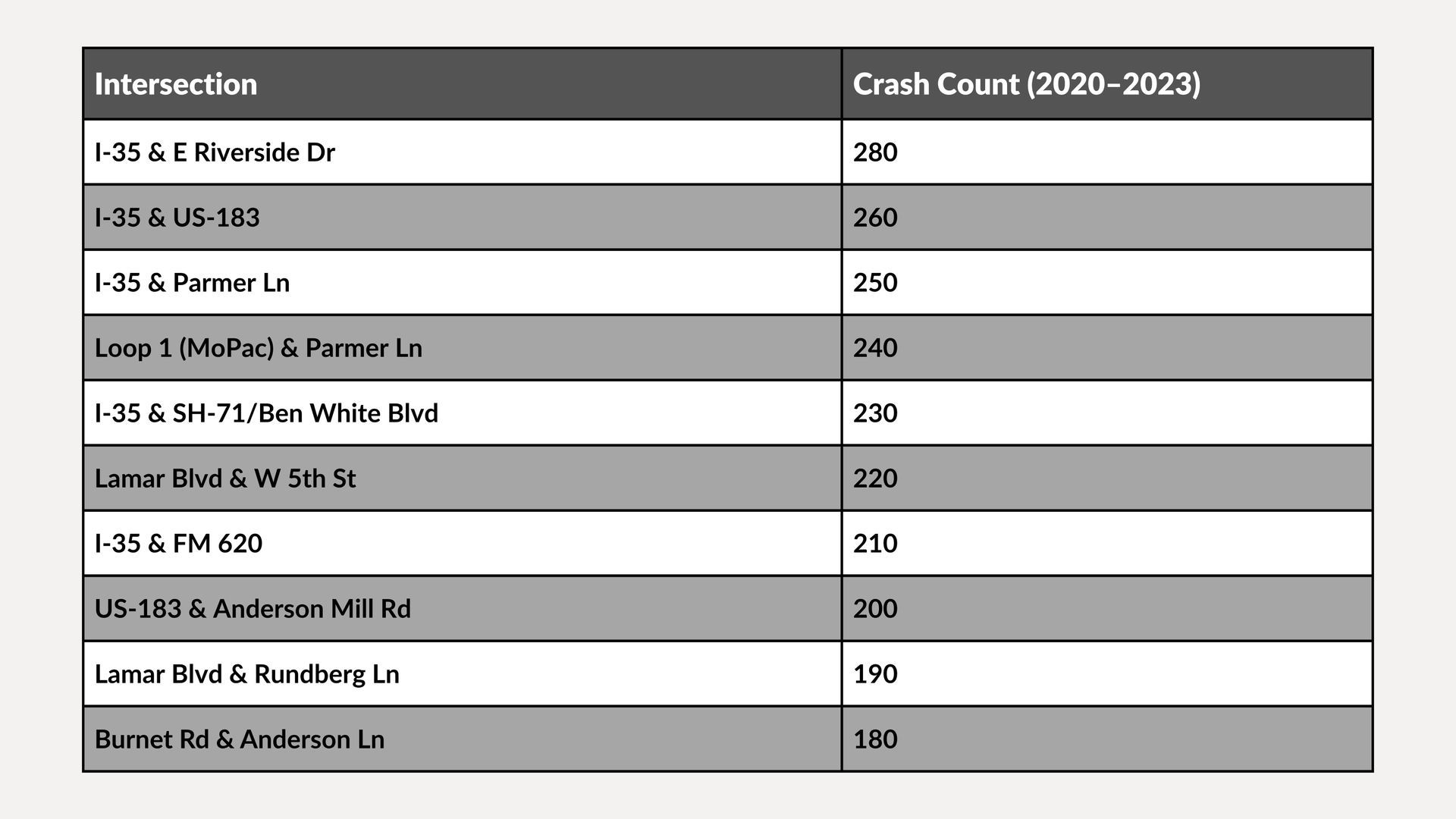
Austin’s Most Crash-Prone Roads and Corridors
If you’ve driven in Austin, you know how hectic the roads can get. According to TxDOT CRIS data, these routes are consistently among the city’s most crash-prone, and often lead to serious injuries. Whether you’re commuting daily or just passing through, being aware of Austin’s most dangerous roads can help you stay alert and reduce your risk on the road.
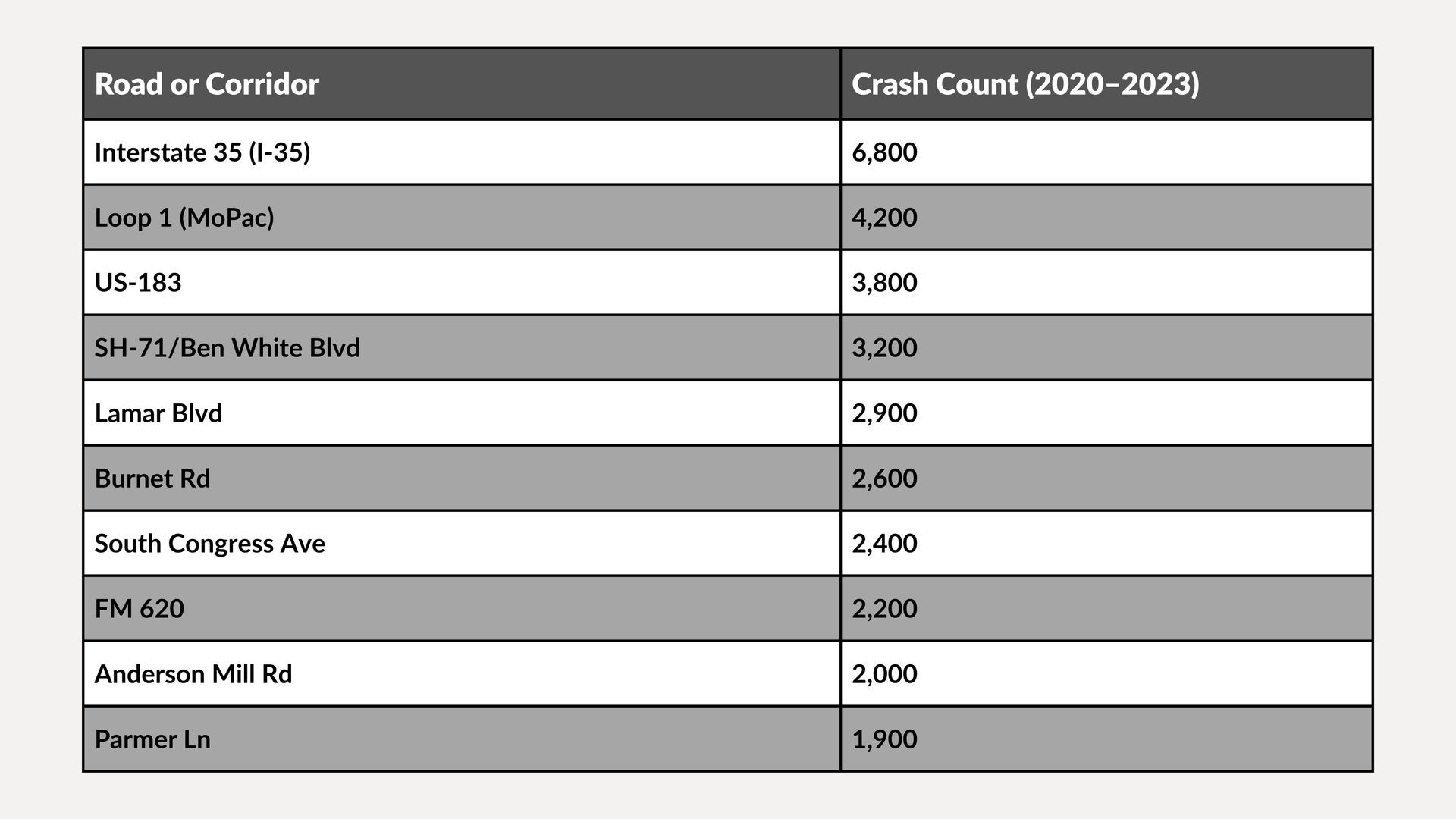
Reasons for Crashes in Austin
Crashes in Austin are often the result of a mix of human error, high traffic volumes, and the city’s increasingly complex road network. According to recent data from TxDOT CRIS, speeding remains the top contributing factor, involved in 25.7% of all crashes. On major corridors like I-35, US 183, and MoPac, excessive speed reduces reaction time and increases the severity of crashes, especially during congestion or sudden traffic stops.
Distracted driving is another primary concern, responsible for 12.9% of all crashes in the city. Common distractions include texting, using navigation apps, or adjusting in-car settings. Austin drivers frequently navigate through construction zones, cyclists, and pedestrians, and these split-second distractions can lead to serious consequences.
Traffic signal violations, such as running red lights or failing to yield, account for 10.4% of crashes. These types of breaches are particularly hazardous at busy intersections and often result in T-bone collisions, which have a higher likelihood of causing serious injuries.
Perhaps most concerning is the role of drunk driving, which was a factor in 28% of all fatal crashes. Whether it's nightlife in Downtown Austin, festivals, or weekend gatherings, impaired driving continues to pose a deadly risk, particularly during late-night hours and weekends.
In fact, the Austin Police Department (APD) has expanded its “No Refusal” initiative to run every night, year-round, between 9:00 PM and 5:00 AM. Under this program, if a driver suspected of DWI refuses a breath or blood test, officers can immediately obtain a search warrant from an on-call judge to collect a blood sample. A dedicated DWI specialist is on-site at the jail each night to help streamline the arrest, warrant, and testing process.
This policy was created in response to Austin’s persistently high rates of impaired driving, particularly during late-night hours and weekends. By making it harder for suspected drunk drivers to avoid testing, the No Refusal program strengthens law enforcement's ability to gather reliable evidence, prosecute DWI offenses effectively, and deter reckless behavior behind the wheel. It also supports the city’s broader Vision Zero goals to reduce serious injuries and fatalities on the road. With drunk driving involved in nearly 1 in 3 fatal crashes in Austin, this year-round enforcement strategy helps hold offenders accountable while promoting safer streets for everyone.
Together, these factors underscore the importance of defensive driving, awareness, and responsible behavior behind the wheel in reducing the risk of serious accidents in Austin.
Areas with the Most Fatal Crashes in Austin
Fatal crashes in Austin often occur along the city’s busiest and most complex roadways. Many of these deadly incidents happen in areas with heavy commuter flow, poorly designed intersections, or a lack of pedestrian infrastructure. As Austin continues to grow, staying aware of where these high-risk zones are can help drivers make safer choices, avoid tragic outcomes, and support broader efforts to improve road safety citywide.
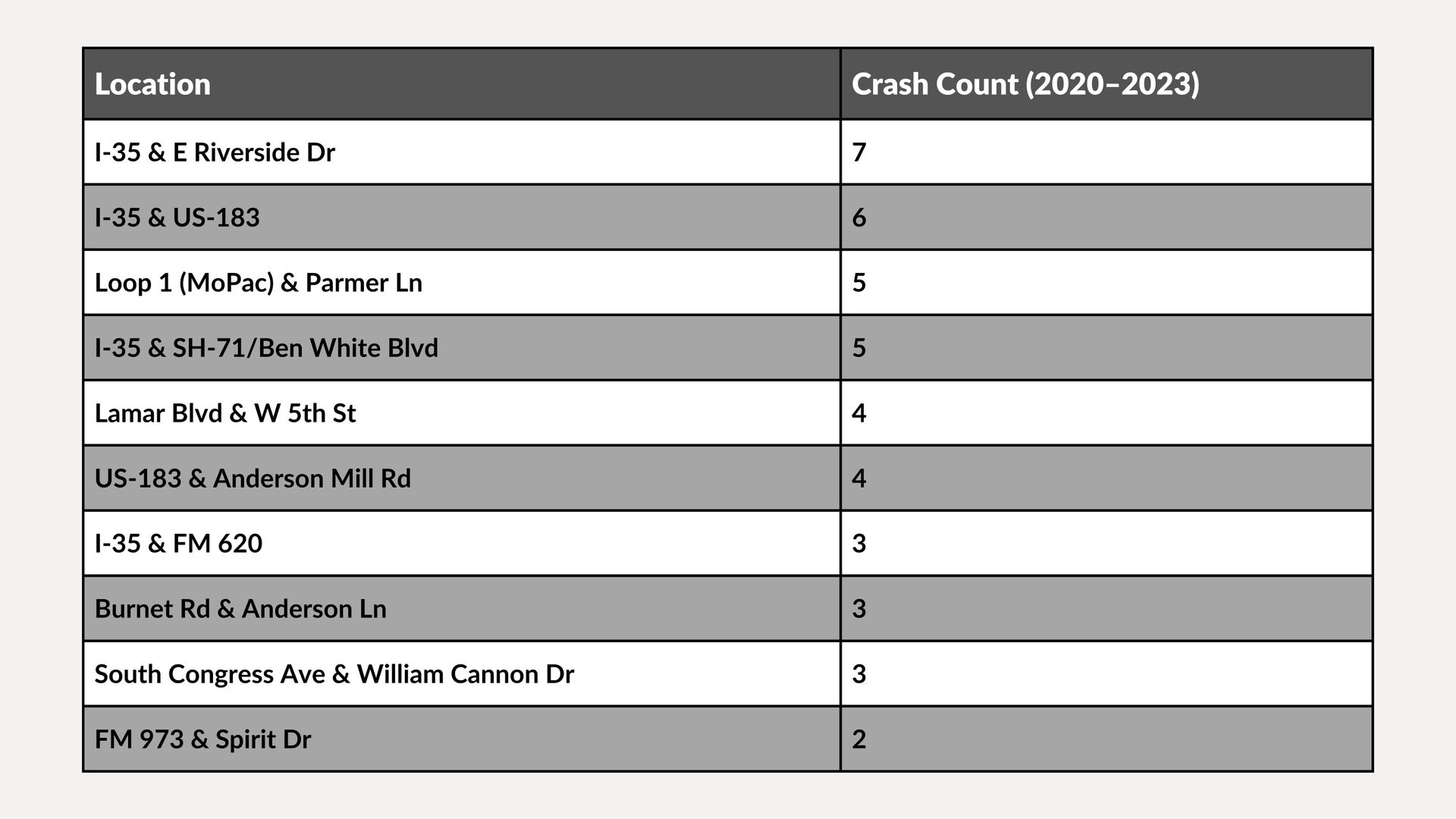
Losing a loved one in a car accident is devastating. At A2X, we’re here to support you through this difficult time, offering compassionate guidance and helping you understand your options. If your family has been affected by a fatal crash in Austin, please don’t hesitate to reach out. We’re ready to help you take the following steps toward healing and justice.
How to Stay Safe on the Road
- Obey Speed Limits: Speeding is a leading cause of crashes. Stick to posted limits, especially in high-traffic and school zones.
- Avoid Distractions: Keep your eyes on the road and hands on the wheel. Avoid texting, eating, or adjusting your phone while driving.
- Plan for Heavy Traffic: Austin’s major corridors can get congested, especially during rush hour. Allow extra travel time and stay patient to avoid aggressive driving.
- Never Drive Impaired: Don’t drive if you’ve been drinking or using substances that affect your judgment. Use a rideshare service or designate a driver instead.
When Austin’s Roads Turn Dangerous, A2X Stands by Your Side
Since Austin is a fast-growing city with notoriously heavy traffic, this means that some of the most severe and tragic accidents occur here, changing lives in an instant. At A2X, we understand the devastating impact these crashes can have on victims and their families. That’s why we’re committed to providing compassionate support and expert guidance when you need it most. If you or a loved one has been impacted by a serious accident in Austin, don’t face it alone. Reach out today and let us help you take the next step toward recovery and justice.
Request a Consultation
Other Practice Areas

